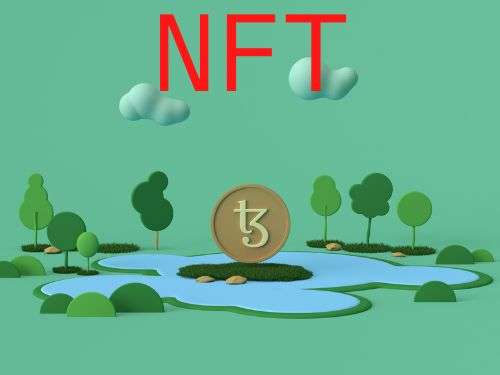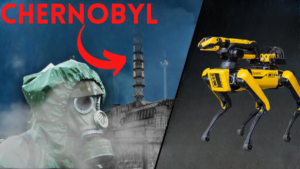NFTs are popular right now, and so is the carbon footprint they leave on the Earth’s Climate.

Even if you’ve heard about Non-Fungible Tokens (NFTs), you may not know what they are or what they are used for. To put it another way, imagine them as very costly trading cards which you can buy, sell, and possess on the blockchain.
The same service, if you’re interested in trading cryptocurrencies like Bitcoin or Ethereum, may be found here. Most NFTs are used to sell digital art, such as an anniversary Nyan Cat being acquired for $621,408 on the NFT marketplace. They may, however, are used to sell the rights to audio, video, and text content. To illustrate this point, consider Twitter co-founder Jack Dorsey, who sold his first ever tweet for roughly $3 million after launching the social media platform “Twitter” in 2006.
For those keeping track, NFTs have been doing this since 2017, but their popularity has recently skyrocketed. What’s really at issue here isn’t the ridiculousness of what some are calling the “evolution of fine art collecting” or the fact that you can still duplicate and download the file that someone spent millions of dollars for.
Due to the ridiculous high-end computers which were necessary to sell, trade, and store bitcoin, all of these kinds of crypto transactions use a significant amount of energy.
As much energy as a small nation is reportedly used by all these transactions. In order to execute its crypto transactions, for example, Ethereum uses as much energy annually as Nigeria does.
A study by Cambridge University estimates that Bitcoin trading uses more power yearly than the whole country of Argentina. By land area, Argentina is the eighth-largest nation on the planet.
It’s a given that the vast majority of the electricity used is derived from fossil fuels rather than renewable sources. A French digital artist who sold six works determined that the sale of just six pieces would require enough energy to operate his studio for two years in only 10 seconds, therefore he decided to discontinue selling using NFTs.
Let’s find out how NFTs are dangerous to the Environment, their effects and lower carbon NFTs that don’t affect the environment.
- Why Samsung will now let Galaxy users repair their own Devices?
- Google’s New Immersive View to Make You Fall in Love with Google Maps
Are NFTs dangerous to the Environment?
You could additionally have actually come across Non-Fungible Tokens (NFTs) and also just how they influence the atmosphere. While the NFT on its own no longer has any kind of result on the atmosphere, the result on our survival is actually linked to the technique the NFT is actually created for.
Creating NFTs is a time- and resource-consuming process. Proof-of-work mining is now the most common way for creating NFTs, which requires a lot of power. Any operation that uses a lot of energy, crypto or otherwise, contributes to climate change by emitting greenhouse gasses like co2 into the atmosphere. The use of proof of stake is one such ecologically sustainable approach of minting NFTs.
Important Points to Keep in Mind
- According to the way in which NFTs are generated, they may be dangerous to our environment.
- A typical American home consumes the same quantity of energy in nearly 9 days to generate a single NFT by using proof-of-work technique.
- To minimize the environmental effect of NFTs, sellers and buyers are coming up with unique solutions. We don’t need to use a lot of resources to make a NFT.
Effect of NFTs on the Earth’s Climate
Although NFTs generally have no environmental effect, the process through which they are produced may have huge ramifications. A glimpse at how proof of work-based NFTs are created will help us better understand why their manufacturing consumes that much energy.
Just before the NFT is created, it’s usually posted on a NFT marketplace. Posting an NFT doesn’t need a lot of energy, but its position will have a big impact on the amount of energy needed for the minting process. Because OpenSea supports Ethereum’s proof-of-work infrastructure, using an NFT marketplace such as this implies the minting process would be energy heavy for the moment while.
The acquisition of just an NFT is usually the driving force behind the minting of an NFT. Cryptocurrency miners who have access to a large amount of computer resources create the NFTs, or “mine,” via proof of work. With specialized processing hardware that consumes enormous quantities of power, mining is a very energy-intensive operation. Miners’ opportunity for minting the NFT by solving challenging mathematical problems fast.
When the NFT payment is done, you may either keep or shift the NFT to somebody else. In order to move an NFT to some other NFT marketplace, the same energy-intensive method that’s used to generate the NFT must be performed. Keeping an NFT in storage doesn’t have to use energy.
Inquiring minds want to know how much energy is used in mining. As a result, miners will need to run a huge amount of processing hardware and then also use massive energy in an attempt to solve the most difficult mathematical problems early. Although only a single miner is chosen to verify every incoming transaction to the blockchain, international reach of miners are racing to verify transactions on the blockchain, such as NFT transactions, forcing each active miner to massively use electricity.
With 260 kilowatt hours of power required for every single Ethereum proof-of-work transaction (including NFT transactions), an ordinary American home could utilize it for 9.05 days.
NFTs with a lower carbon footprint
The basic reason for the high energy usage of blockchains like ethereum and bitcoin is that they employ a consensus mechanism called proof-of-work.
Proof-of-work is an amazing way to verify the data integrity however as worldwide usage of blockchains that employ proof-of-work technology rises. so does the power usage of miners to validate the data.
It’s crucial to stress, though, that there are other NFT systems called side chains that are less damaging to the environment. Then there are sites that purchase carbon offsets to be more ecologically conscientious. However, the major answer most campaigners support is clean energy. More, if not all bitcoin machines should operate on sustainable energy like wind, solar, and hydropower.
Other blockchains versions that provide nft support such as tasos, symbol, and polygon, all make use of the upgraded proof of stake process that does not demand vast quantities of compute and hence consume power.
For example, Tasos says that its blockchain requires just 0.00006 terawatt hours of energy per year compared to 33.357 terawatt hour for ethereum. Yet there is good news for etherium aficionados, with ETH2.0, a greener proof-of-stake update is suggested for the present etherium ecosystem. Etherium intends to reduce down the expenses as well as the ecological effect of not only NFTs but the ethereum blockchain as a whole by as much as 99.98 percent.
Conclusion: My Story
Personally, I was seeing people claim NFT were terrible for the environment and I couldn’t see how something digital, that doesn’t truly physically exist, could affect the environment.
At least now I know that they utilize so much energy it could power a small nation. The issue is not the quantity of energy they utilize, but from where they acquire the energy.
So, let’s hope that very soon they will find a method to spend less energy, much as computers a few decades ago were so enormous that they required a full room for them, maybe this will speed up the discovery of a new way of utilizing energy.
Therefore, NFTs are beneficial for artists, harmful for the environment, and little more than a flex for the consumers.
- Why Google wants You to build Quantum computer by playing a Game?
- Can NanoTech be Injected?
- How Giant Ionocraft flies without any moving parts?
- Why Mind Uploading is the Secret Key for Immortality?
Frequently Asked Questions
1. How do NFTs contribute to the destruction of the environment?
Because of the high cost of producing and storing the CPUs required to operate this kind of crypto, there is a severe scarcity of gold and other elements required to make CPUs, further escalating the environmental harm caused by the industry’s use of mining.
2. For whom NFTs are good?
NFTs are best suited for well-known artists, not everyday performers.
A pyramid system for artists, those without a strong support network must spend more to mint their products than they can recoup from sales. There’s also the fact that it’s already losing popularity, which may or may not be true, but it illustrates the thing’s instability.
- At last, Revealing the Impact of Loss Mechanism in Solar Cell Candidate
- How Quantum Computer works [Quantum Computer explained]


![Moon Jellyfish has [ Hidden Secrets ] You don't know moon jellyfish](https://spaceupper.com/wp-content/uploads/2022/11/1-1-300x169.jpg)



